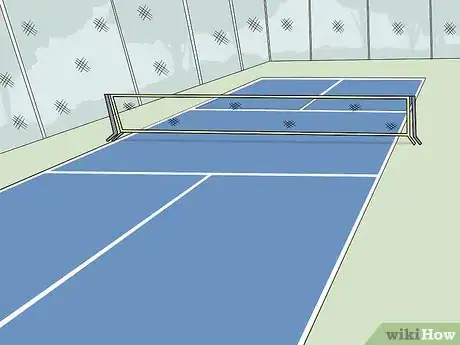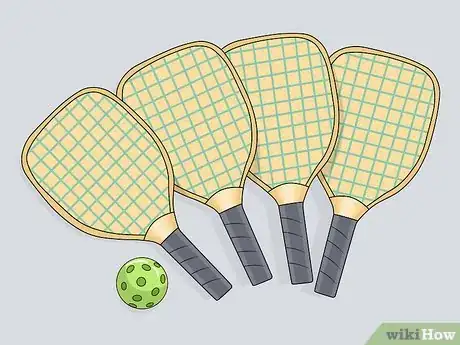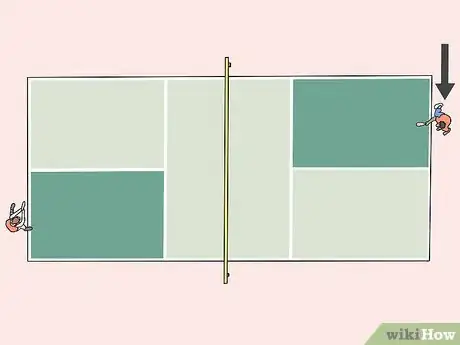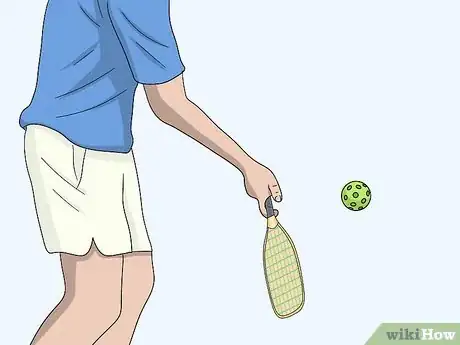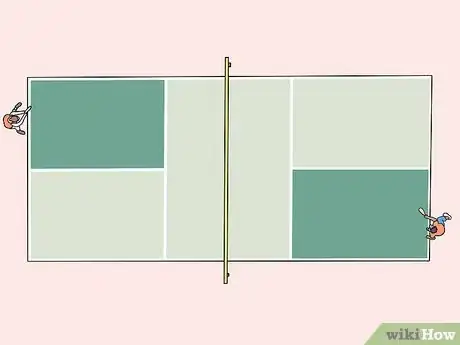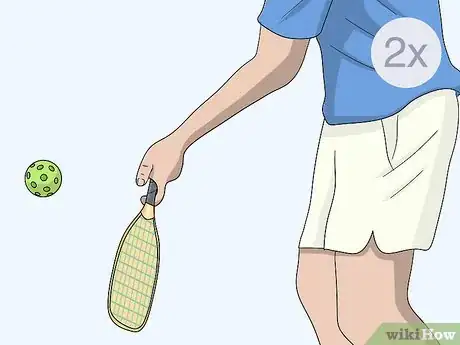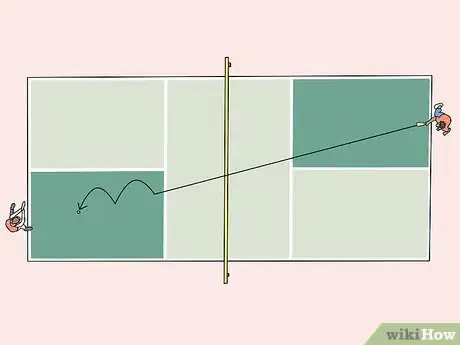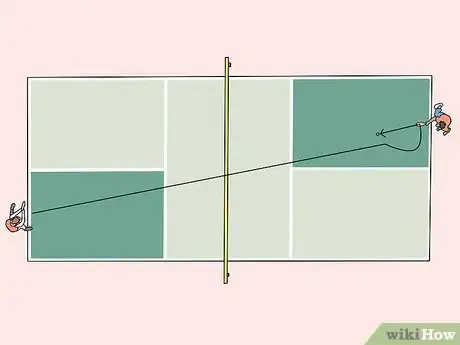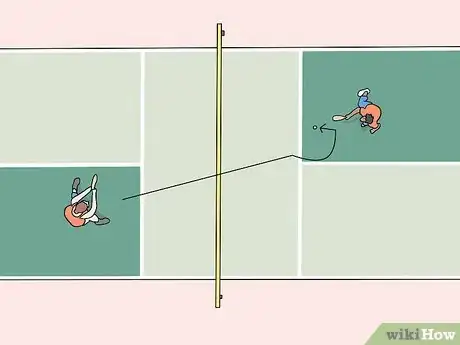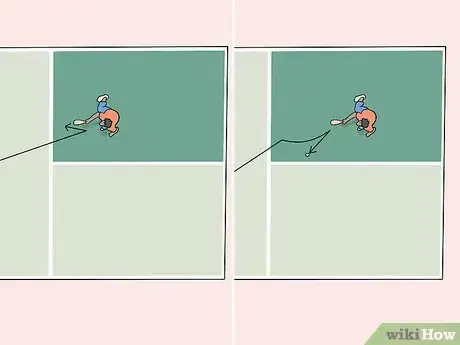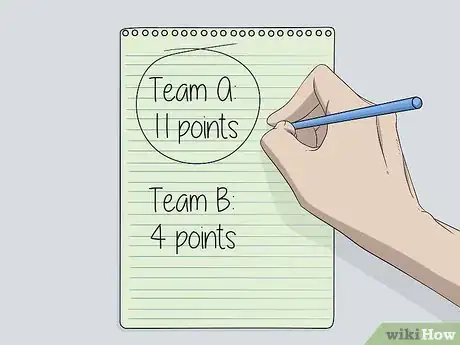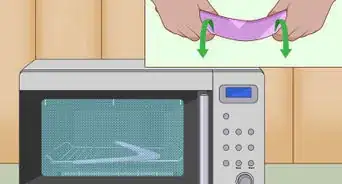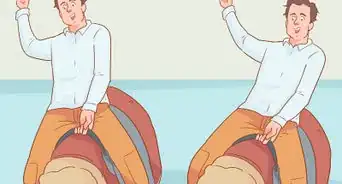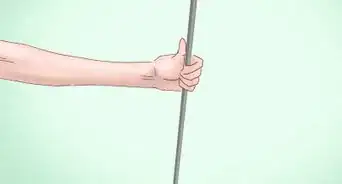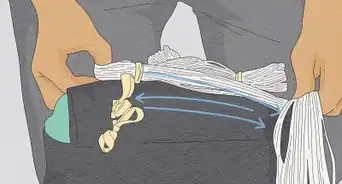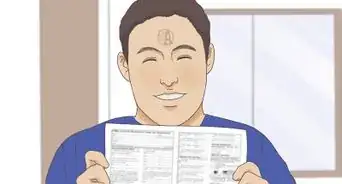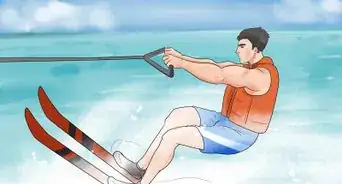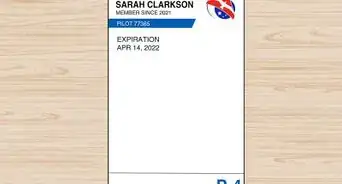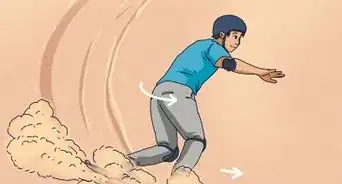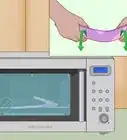This article was co-authored by wikiHow Staff. Our trained team of editors and researchers validate articles for accuracy and comprehensiveness. wikiHow's Content Management Team carefully monitors the work from our editorial staff to ensure that each article is backed by trusted research and meets our high quality standards.
There are 8 references cited in this article, which can be found at the bottom of the page.
This article has been viewed 43,132 times.
Learn more...
Pickleball is a fast-paced game that combines elements of tennis, badminton, and ping pong. It’s an extremely popular paddleboard sport partly because it doesn’t require much equipment and it’s super easy to learn and play. All you need are paddles, a pickleball, and a pickleball court. Whether you’re playing singles or doubles, learn the layout of the court and follow a few simple rules for an exciting back and forth competition!
Steps
Starting a Game
-
1Find a pickleball or badminton court to play a game. Pickleball and badminton courts have the same size measurements, but a pickleball court will have the net lowered to the ground so it’s at a height of 34 inches (86 cm). Search online for pickleball courts near you or find a gym that has badminton and pickleball courts that you can use to play a game.[1]
- Pickleball courts can be located outside or indoors.
Tip: If you’re using a badminton court, make sure you adjust the net so it’s at the right height for a game of pickleball.
-
2Play with 2 people for singles or 4 people for doubles. Pickleball can be played with 2 people competing against each other, which is known as singles play, or with 2 teams of 2 people playing against each other, which is called doubles play. Games of singles and doubles both use the same court, have the same number of faults before losing their serve, and are often played to 11 points.[2]
- Doubles is the most popular way to play pickleball.
Advertisement -
3Use 1 pickleball and have each player use a pickleball paddle. Pickleball specially designed paddles, which are smaller than tennis racquets, but larger than ping-pong paddles. Each player needs to have 1 paddle. You also need to use a pickleball, which is a lightweight ball with holes through it like a whiffle ball.[3]
- There are a variety of colors you can choose for your pickleball.
Serving the Pickleball
-
1Stand behind the baseline of the right service court to start a game. A serve, which is the strike that starts a game or round of pickleball, is always performed from behind the baseline, which is the 20 ft (6.1 m) line at the end of each side of the court. When you’re starting a game of pickleball, stand behind the baseline on the right side of the court.[4]
- The 2 squares in front of the baseline are known as the right and left service courts.
- Once a game is in play, you’ll alternate which service court you stand behind to serve.
Note: In a singles game, the server serves from behind the right service court to start a round after a fault when their score is even and from the left service court when the score is odd.
-
2Hit the pickleball with an underhand strike below waist level to serve it. Hold the pickleball at your side with 1 hand and hold your paddle steady with another. When you’re ready to serve, drop the pickleball and strike it with an underhand motion with your paddle.[5]
- If you hit the pickleball above waist level, or if the ball bounces off of the ground, then it’s a fault.
-
3Clear the net so the ball bounces once on the opposite service court. Aim for the service court diagonally across from you when you serve the pickleball so it bounces on it once. Avoid hitting the net with your serve, or hitting the pickleball past the opposing team’s baseline before it bounces off of the ground in the opposite service court.[6]
- For example, if you’re serving from behind your right service court, you must bounce the ball once on the opposing team’s right service court, which is diagonal across from you.
- If your serve hits the net or goes past the opposing team’s sideline or baseline before it bounces on the service court, then it’s a fault.
-
4Switch to the other service court when you score a point. When you serve the pickleball and it bounces off of the opposing team’s service court, the ball is in play and is hit back and forth until a fault is committed, such as the ball going out of bounds, hitting the net, or bouncing more than once on the court. If the opposing team commits a fault when it’s your serve, then you score a point. Whenever you score a point, start your next serve from behind the other service court.[7]
- For instance, if you serve the pickleball from behind the right service court, and then the other team commits a fault and you score a point, your next serve will be from behind the left service court.
- Only the team that is serving can score a point!
-
5Allow the other player or team to serve when you commit 2 faults. If you’re playing singles, or 1 on 1, you get to commit 2 faults before you turn over the serve to the other player so they can have a chance to score. If you’re playing doubles, or 2 on 2, whenever a player on a team commits a fault, then their partner gets to serve. Whenever the team commits 2 faults, then the other team gets to serve.[8]
-
6Score a point when it’s your serve and your opponent commits a fault. After the ball is served and the 2-bounce rule is observed, both teams volley the ball back and forth and keep it in play. Whenever a team commits a fault, such as the ball going out of bounds or bouncing twice on the court, then the play stops and the ball is served. If it’s your serve and the opposing team commits a fault, then your team earns 1 point.[9]
- If it’s your team’s serve and you commit a fault, then no points are awarded. However, if you commit 2 faults, then it becomes the other team’s serve.
Volleying the Pickleball
-
1Wait until the serve bounces on the service court before returning it. When the ball is served, it must be allowed to bounce 1 time on the service court. Once the ball bounces on the service court, use your paddle to return the ball to the other side of the net so it can bounce on 1 of the service courts.[10]
- The return ball can be bounced on either of the opposing team’s service courts.
-
2Allow the return to bounce once on the court before you hit it back. The two-bounce rule requires both the serve and return ball to bounce 1 time on the service court before the ball is allowed to be volleyed back and forth. After you send your serve and the opposing team returns it, wait until the ball bounces on the service court and then hit it back over the net with your paddle.[11]
- If the return ball doesn’t land on one of the service courts to bounce, then it’s a fault and the serving team scores a point.
-
3Hit the ball before or after it bounces once the two-bounce rule is followed. Once the two-bounce rule has been observed, volley the ball back and forth by hitting it either before it touches the ground or after 1 bounce. Keep the ball in bounds and avoid hitting the net as you hit it to the other side.[12]
- You can’t hit the ball more than once or pass it off to a teammate.
- If the ball bounces on sideline or baseline, then it’s still in play. If the ball hits outside of the lines, then it’s out of bounds, which is a fault.
-
4Avoid standing in the kitchen when you’re volleying the ball. The kitchen, also called the non-volley zone, is the small rectangular zone in front of each side of the net. You can’t volley the ball if you’re standing in the zone, or if your foot is on the line, or it’s a fault. Before you volley the ball back to the other team, make sure you aren’t in the kitchen.[13]
- It’s also a fault if a serve lands in the kitchen.
Note: If your foot touches the kitchen line because your momentum carried you, it’s a fault, even if you touch the line after you already hit the ball.
-
5Continue volleying the ball until a fault is committed. Keep the ball in play and hit it back and forth to the opposing team. There is no limit to the number of volleys you can perform. If it’s your serve, and the opposing team commits a fault, then your team scores a point and the ball is served again. If you commit a fault while it’s your serve, then you get to serve the ball again and no points are scored. If you commit 2 faults while it’s your serve, then the opposing team gets to serve.[14]
- Games of pickleball are often played to 11 points, with 1 team needing to be ahead by 2 points in order to win. However, tournament games can go to 15 or 21, with a team needing to be ahead by 2 points in order to win.
Winning a Game
-
1Score 11 points to be eligible to win a game. As you play a game, keep track of the points that are scored by each team. Once a team reaches 11 points, they’re eligible to win the game. If they already have a 2-point lead whenever they reach 11 points, then they win the game.[15]
- For instance, if the score of a game is 10 to 4 and the team with 10 points scores again, then they win the game.
-
2Earn a 2-point lead once you have 11 points to win. Once a team scores 11 points, if they have a 2 point lead, then the game is over and they win. But, if a team scores 11 points, and they don’t have a 2 point lead, then the game continues until they do.[16]
- For example, if you score 11 points, but the opposing team has 10 points, then you must score another point to make the score 12 to 10 in order to win the game.
Note: Pickleball tournaments often have games that are played to 15 points, with a 2 point lead required to win.
-
3Play 3 total games to decide the winner of a match. Pickleball is fast-paced and points are scored often, so matches of pickleball usually consist of 3 total games. Win 2 out of 3 games in order to win a match.[17]
- Some pickleball tournaments may have matches of 5 games.
Things You’ll Need
- Pickleball paddles
- Pickleball
- Water and towel
References
- ↑ https://www.pickleball.com/rules-how-to-play-pickleball-s/106.htm
- ↑ https://www.playpickleball.com/how-to-play
- ↑ https://www.usapa.org/what-is-pickleball-description-of-equipment/
- ↑ https://usapickleball.org/what-is-pickleball/official-rules/rules-summary/
- ↑ https://youtu.be/fTvPYdKZqO0?t=44
- ↑ https://usapickleball.org/what-is-pickleball/official-rules/rules-summary/
- ↑ https://usapickleball.org/what-is-pickleball/official-rules/rules-summary/
- ↑ https://usapickleball.org/what-is-pickleball/official-rules/rules-summary/
- ↑ https://www.pickleball.com/rules-how-to-play-pickleball-s/106.htm
- ↑ https://usapickleball.org/what-is-pickleball/official-rules/rules-summary/
- ↑ https://usapickleball.org/what-is-pickleball/official-rules/rules-summary/
- ↑ https://youtu.be/fTvPYdKZqO0?t=81
- ↑ https://youtu.be/fTvPYdKZqO0?t=101
- ↑ https://youtu.be/fTvPYdKZqO0?t=90
- ↑ https://www.playpickleball.com/how-to-play
- ↑ https://www.playpickleball.com/how-to-play
- ↑ https://www.playpickleball.com/how-to-play
About This Article
Pickleball is a fast-paced game for 2 or 4 players where players volley the pickleball over a net to score points. To start the game, each player (or team) sets up on their side of the court with the net between them. Decide which side will serve the ball first. Then, the first server stands behind the baseline of the right service court and hits the pickleball with their paddle using an underhand motion. The ball should clear the net and bounce once on the service court diagonally opposite before the opponent hits it. The players then hit the ball back and forth over the net, observing the 1 bounce rule, until a fault is committed. Faults include the ball going out of bounds, hitting the net, or bouncing more than once on the service court. If the opposing team commits a fault when it’s your serve, then you score a point. Whenever you score a point, you start your next serve from behind the left service court. If you’re playing singles, or 1 on 1, you can commit 2 faults before you turn over the serve to the other player so they can have a chance to score. If you’re playing doubles, or 2 on 2, whenever a player on a team commits a fault, then their partner gets to serve. Whenever the team commits 2 faults, then the other team gets to serve. Games of pickleball are often played to 11 points, with 1 team needing to be ahead by 2 points in order to win. To win a pickleball match, win 2 out of 3 games!
